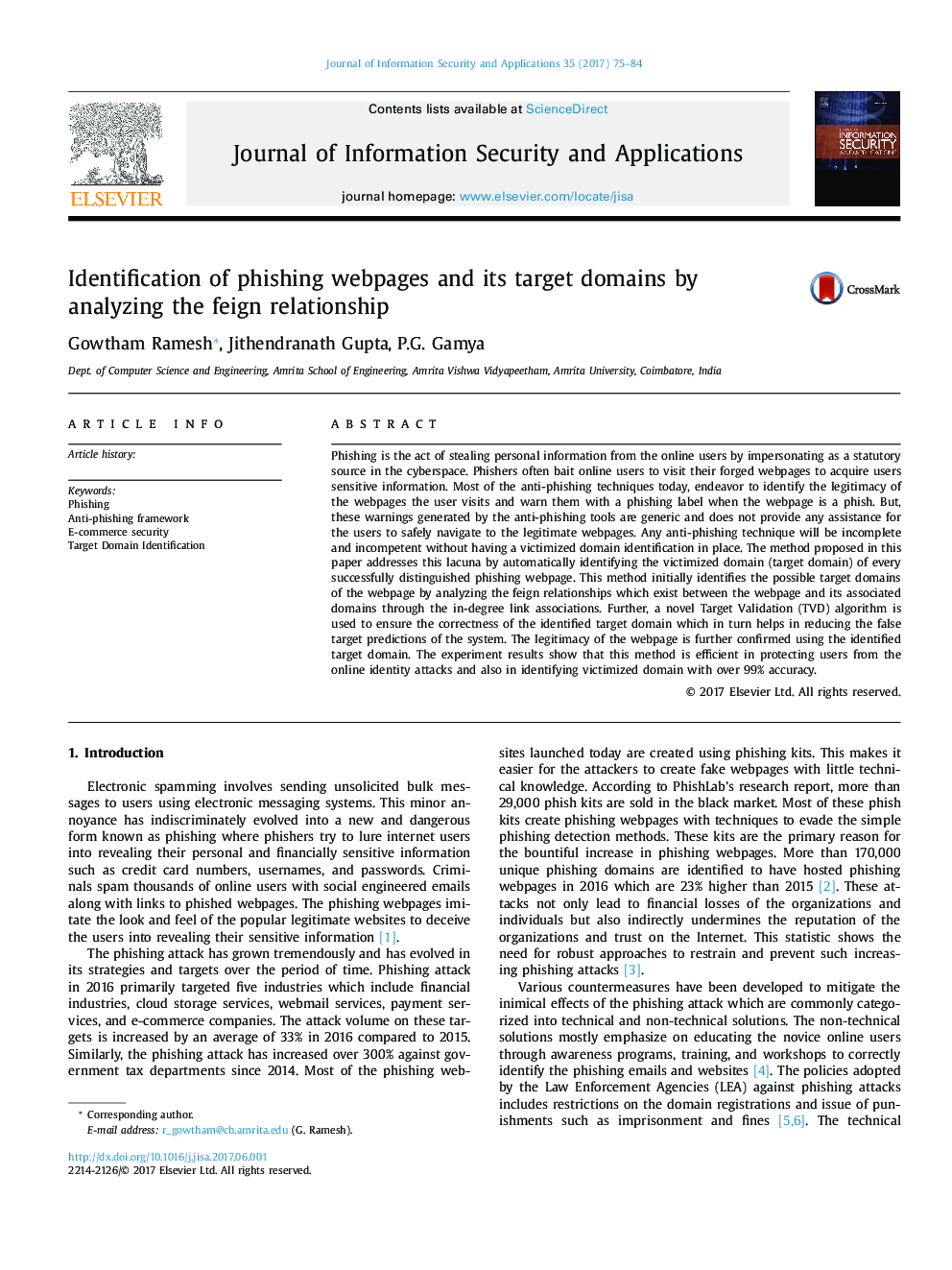| Article ID | Journal | Published Year | Pages | File Type |
|---|---|---|---|---|
| 4955691 | Journal of Information Security and Applications | 2017 | 10 Pages |
Abstract
Phishing is the act of stealing personal information from the online users by impersonating as a statutory source in the cyberspace. Phishers often bait online users to visit their forged webpages to acquire users sensitive information. Most of the anti-phishing techniques today, endeavor to identify the legitimacy of the webpages the user visits and warn them with a phishing label when the webpage is a phish. But, these warnings generated by the anti-phishing tools are generic and does not provide any assistance for the users to safely navigate to the legitimate webpages. Any anti-phishing technique will be incomplete and incompetent without having a victimized domain identification in place. The method proposed in this paper addresses this lacuna by automatically identifying the victimized domain (target domain) of every successfully distinguished phishing webpage. This method initially identifies the possible target domains of the webpage by analyzing the feign relationships which exist between the webpage and its associated domains through the in-degree link associations. Further, a novel Target Validation (TVD) algorithm is used to ensure the correctness of the identified target domain which in turn helps in reducing the false target predictions of the system. The legitimacy of the webpage is further confirmed using the identified target domain. The experiment results show that this method is efficient in protecting users from the online identity attacks and also in identifying victimized domain with over 99% accuracy.
Keywords
Related Topics
Physical Sciences and Engineering
Computer Science
Computer Networks and Communications
Authors
Gowtham Ramesh, Jithendranath Gupta, P.G. Gamya,
